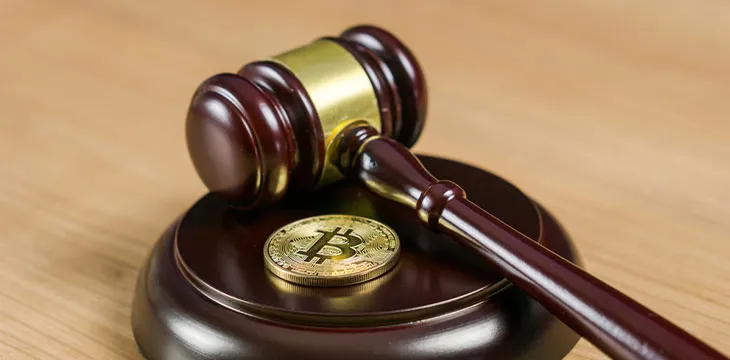|
Getting your Trinity Audio player ready...
|
The United Kingdom Court of Appeal recently decided that the question of whether blockchain developers owe legal duties to those who use and rely upon their chains deserved the benefit of a complete trial, saying that “if the decentralized governance of Bitcoin really is a myth, then in my judgment there is much to be said for the submission that bitcoin developers while acting as developers, owe fiduciary duties to the true owners of that property.”
The Court of Appeal was considering a case brought by Tulip Trading, a company that lost access to billions worth of digital assets as a result of a hack. The High Court had thrown the case out because it found that Tulip Trading had failed to show that there was a serious issue to be tried on the question of whether blockchain developers are under a legal duty to return lost or stolen digital assets to their rightful owners.
The Court of Appeal agreed to hear the appeal on the basis that the question was “one of considerable importance and is rightly characterized as a matter of some complexity and difficulty.” They ultimately overturned the High Court’s decision, ruling that Tulip Trading’s case had enough merit to proceed to trial and recognizing that “for Tulip’s case to succeed would involve a significant development of the common law on fiduciary duties.”
The potential implications of this assent are enormous. If blockchain developers do indeed owe legal duties to their users, and those duties oblige them to return access over stolen or lost digital assets to their rightful owners, then one of the industry’s longest-standing and most often repeated assumptions is shown to be false: the idea that access to legally owned digital assets such as BTC, once stolen or lost, is gone forever. Developers who have, until this point, washed their hands of any responsibility despite having the power to return access to those affected will be forced to act where they can.
This is important because the pervasive status-quo view has almost certainly stopped institutional investors from embracing digital assets. To them, the idea of meaningfully committing to an asset that can be lost or stolen from anywhere at anytime with no available recourse to ensure its return is a non-starter. The problem only becomes more obvious as time passes: Chainalysis found that $3.8 billion worth of digital assets were stolen in 2022, compared to $3.3 billion in 2021 and $0.5 billion in 2020.
If Tulip Trading succeeds in busting this unsustainable status quo, then digital assets become a far more enticing and realistic prospect for the business world at large.
The case for duties
There are two specific duties being argued for by Tulip Trading: a fiduciary duty and a tortious duty of care. Fiduciary duties exist where one person has undertaken to act on behalf of another in circumstances that give rise to a relationship of trust and confidence—often as a result of somebody entrusting property to them. A tortious duty of care requires a person whose actions might be reasonably foreseen to cause harm to another person of sufficiently close proximity to take reasonable care. Because success on the fiduciary front will likely also entail success on the duty of care front, the Appeal ruling is chiefly concerned with the fiduciary duty.
Many lay digital asset enthusiasts will balk at the idea that blockchain developers should owe these sorts of duties. However, this very question is subject to a lively academic debate. Angela Walch’s much-cited paper, ‘In Code(ers) we trust: Software Developers as Fiduciaries in Public Blockchains,’ argues that the governance of blockchains is highly centralized and that those developers who create and continually modify the rules by which they function are acting as fiduciaries to their users.
One of the more obvious objections to this theory is to say that the developers are an unfixed, fluctuating group of volunteers who act more as passive stewards of their blockchains than active managers and developers. In that vein, they are often referred to as ‘decentralized.’ As a result, blockchain users can’t be said to have ‘entrusted’ anything to the developers.
This is the argument that the blockchain developer defendants in Tulip Trading made, and which the initial High Court accepted in deciding that Tulip Trading had no serious case. But the Court of Appeal disagreed, at least to the extent that they were unwilling to throw the case out on that basis without the benefit of a complete trial.
This is a good thing: the idea that governance over blockchains such as BTC is ‘decentralized’ has been mistakenly treated as a bedrock fact by digital asset enthusiasts and investors alike for years. It’s an understandable misconception: blockchain technology is such that it can be misleadingly described quite easily, particularly given the knowledge gap between those in charge of them and those likely to be interested in them.
But peel back a few layers of marketing, and these ‘decentralized’ systems start to look awfully centralized. There is a central body of developers leading the development roadmap and overseeing the implementation of updates, even if there are developers at the margins who come and go. These people are the gatekeepers and decision-makers: no change to, for example, the BTC network can take place without the work and consent of those people. And it is these people that those who use the blockchains and their associated assets rely on: for example, BTC holders rely on those developers not to introduce changes to the network which would crater the value of their tokens, or restrict their access to them, or otherwise destroy the viability of the network.
The proof of this is in the pudding whenever something goes drastically wrong on these networks. The Ethereum DAO fiasco is a prime example: the DAO was built on the Ethereum blockchain and, within a month, had led to the theft of $60 million worth of ETH. Faced with the potential loss of 15% of all ETH in circulation, those developers in control of Ethereum took action, forking the network and recovering the funds. The developers tried to add a coat of democratic paint to this decision by polling the community, but less than 6% of all ether holders participated, and 25% of all votes came from a single ETH address. Even ignoring the lack of engagement, the options presented to the community for voting were selected and proposed by the core Ethereum developers. Who else?
So much for decentralization.
In illustration of the importance of this question, the fact that the High Court judge had assumed that the governance of the defendant networks was indeed decentralized was key to the Court of Appeal’s decision to grant the appeal. This question, the Lord Justices said, is highly disputed between the parties, and it is not appropriate to assume it favors the defendant developers. The words of the judgment bear repeating:
“If the decentralized governance of bitcoin really is a myth, then in my judgment, there is much to be said for the submission that bitcoin developers, while acting as developers, owe fiduciary duties to the true owners of that property.”
In that light, the Lord Justices see real merit in the argument that developers owe legal duties to their users. Lord Justice Briss, who delivered the judgment, sketched out the argument in this way:
“The developers of a given network are a sufficiently well-defined group to be capable of being subject to fiduciary duties. Viewed objectively, the developers have undertaken a role that involves making discretionary decisions and exercising power for and on behalf of other people in relation to property owned by those people. The property has been entrusted to the care of the developers. The developers, therefore, are fiduciaries. The essence of that duty is single-minded loyalty to the users of the bitcoin software. The content of the duties includes a duty not to act in their own self-interest and also involves a duty to act in positive ways in certain circumstances. It may also, realistically, include a duty to act to introduce code so that an owner’s bitcoin can be transferred to safety in the circumstances alleged by Tulip.”
Brighter days ahead for digital assets?
Again, the Lord Justices were not deciding whether Tulip Trading’s case would succeed at trial, just whether it presented a serious case. But for the Lord Justices to chart this argument even at this early stage is significant, considering that for the longest time, the idea that blockchain developers owe their users anything at all was a niche and subject to ridicule by those who would rather see the industry remain in the legal grey area at best and a haven for crime at worst.
Now, we have, for the first time, the Justices of England’s second-highest court recognizing that if the developers of the likes of BTC and BCH do indeed have control over the development of their networks, then they are liable for the consequences. What’s more, it will mean that the millions of people who have suffered from digital asset hacks will have a path toward regaining access to their lawfully owned property.
It would amount to a significant addition to what liability already exists. The U.S. Supreme Court has already ruled that the distributors of peer-to-peer software are directly liable for the infringements they enable: see the U.S. Supreme Court’s ruling in MGM Studios, Inc. v. Grokster, which found the distributors of P2P software directly liable for the copyright infringement of its users. Grokster, the distributors, were forced to close shop permanently as a result.
Anybody resistant to this concept should be treated with suspicion. Certainly, the people stealing billions of dollars a year in digital assets are quite happy for blockchain developers to go on playing dumb: after all, it’s a free pass to go on thieving without consequence. As are those affiliated with legacy payment providers such as Mastercard (NASDAQ: MA) and Paypal (NASDAQ: PYPL), for whom a digital asset payment system that actually works at scale and within the boundaries of the law would be a disaster. As long as digital assets remain in the legal grey area and untouchable by mainstream institutions, they know it poses no threat.
Fortunately, time is showing that these people are on the losing side of history. Over the past 12-24 months, we have seen repeated examples of legislative, regulatory, and law enforcement efforts to reign in the industry’s worst actors and determine just how the law should apply to this developing area.
The law certainly applies: the question is how.
What’s next for Tulip Trading
Having won its appeal, Tulip Trading is now set to have £773,812.35 in initial costs returned to it relating to the defendant’s now-failed jurisdictional challenge and Dr. Craig Wright’s subsequent successful appeal. The true figure is to be determined later and certainly runs much higher than that.
Next up, assuming the defendants don’t try to take this matter to the Supreme Court, the parties will begin prepping their arguments for a full trial. CoinGeek will provide any and all updates as they come.
Watch: Digital Asset Recovery on Bitcoin Explained

 09-19-2025
09-19-2025 





